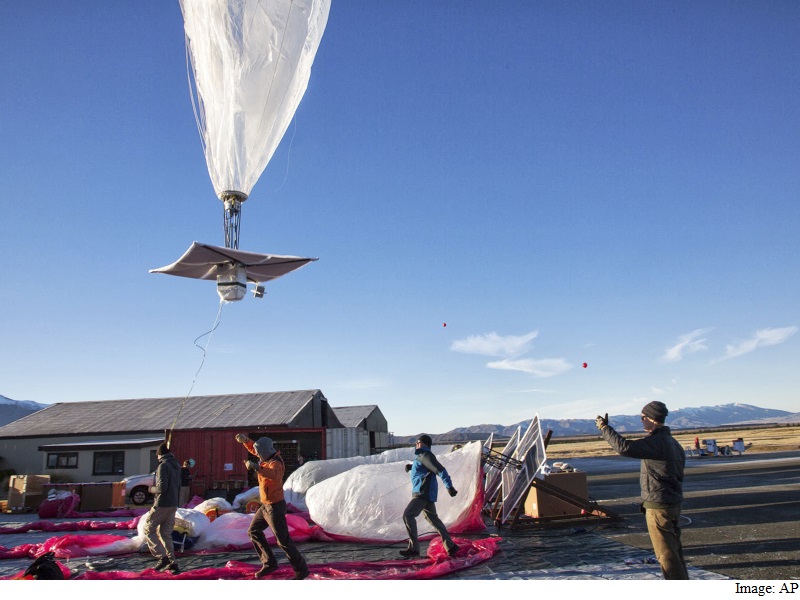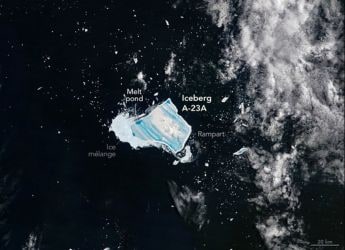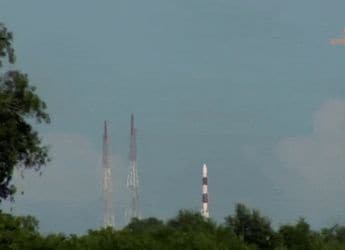- Home
- Internet
- Internet News
- Google 'Project Loon' Balloon Enters Sri Lanka for Internet Tests
Google 'Project Loon' Balloon Enters Sri Lanka for Internet Tests

One of three balloons that will be used in the trials entered Sri Lankan airspace Monday, the Information and Communication Technology Agency chief Muhunthan Canagey said.
"The first balloon entered our airspace this morning. It was launched from South America." Canagey told AFP. "It is currently over southern Sri Lanka."
He said a Google team was expected later this week to test flight controls, spectrum efficiency and other technical matters.
The government announced earlier this month it would take a 25 percent stake in a joint venture with Google to deliver a high-speed Internet service powered by helium-filled balloons.
Sri Lanka is not investing any capital, but will take the stake in return for allocating spectrum for the project. A further 10 percent of the joint venture would be offered to existing telephone service providers on the island.
It promises to extend coverage and cheaper rates for data services.
Service providers will be able to access higher speeds and improve the quality of their existing service once the balloon project is up and running.
The balloons, once in the stratosphere, will be twice as high as commercial airliners and barely visible to the naked eye. The balloons will have a lifespan of about 180 days, but can be recycled, according to Sri Lankan officials involved in the venture.
Official figures show there are 3.3 million mobile Internet connections and 630,000 fixed line Internet subscribers among Sri Lanka's more than 20 million population.
Sri Lanka became the first country in South Asia to introduce mobile phones in 1989 and the first to roll out a 3G network in 2004. It was also the first in the region to unveil a 4G network two years ago.
Catch the latest from the Consumer Electronics Show on Gadgets 360, at our CES 2026 hub.
Related Stories
- Samsung Galaxy Unpacked 2025
- ChatGPT
- Redmi Note 14 Pro+
- iPhone 16
- Apple Vision Pro
- Oneplus 12
- OnePlus Nord CE 3 Lite 5G
- iPhone 13
- Xiaomi 14 Pro
- Oppo Find N3
- Tecno Spark Go (2023)
- Realme V30
- Best Phones Under 25000
- Samsung Galaxy S24 Series
- Cryptocurrency
- iQoo 12
- Samsung Galaxy S24 Ultra
- Giottus
- Samsung Galaxy Z Flip 5
- Apple 'Scary Fast'
- Housefull 5
- GoPro Hero 12 Black Review
- Invincible Season 2
- JioGlass
- HD Ready TV
- Laptop Under 50000
- Smartwatch Under 10000
- Latest Mobile Phones
- Compare Phones
- OnePlus Turbo 6V
- OnePlus Turbo 6
- Itel Zeno 20 Max
- OPPO Reno 15 Pro Mini 5G
- Poco M8 Pro 5G
- Motorola Signature
- Vivo Y50e 5G
- Vivo Y50s 5G
- Lenovo Yoga Slim 7x (2025)
- Lenovo Yoga Slim 7a
- Realme Pad 3
- OPPO Pad Air 5
- Xiaomi Watch 5
- Huawei Watch 10th Anniversary Edition
- Acerpure Nitro Z Series 100-inch QLED TV
- Samsung 43 Inch LED Ultra HD (4K) Smart TV (UA43UE81AFULXL)
- Asus ROG Ally
- Nintendo Switch Lite
- Haier 1.6 Ton 5 Star Inverter Split AC (HSU19G-MZAID5BN-INV)
- Haier 1.6 Ton 5 Star Inverter Split AC (HSU19G-MZAIM5BN-INV)

















